If I could have just 20 perennial flowers in my garden for both sun and shade, these are the ones I’d choose.

By Veronica Lorson Fowler
Just as with choosing your favorite children, choosing your favorite flowers is difficult.
But I bit the bullet and did it. I chose these particular flowers because for the most part, they’re incredibly easy to grow in Iowa–they’re super cold-hardy and they’ll survive on just our natural rainfall. (However, some, to look good and bloom their best, need watering in late July through September. Still, if you don’t do that, they’ll just look sad but probably not die.)
I chose a variety of flowers, including the gorgeous peony shown above, that will bloom from early April through the end of October so that you can have something blooming in your garden all growing season long. A bonus: Most are fairly good cut flowers to bring indoors and put in a vase.
These perennials, unless otherwise noted, are conveniently medium-sized, growing a foot or two high and/or a foot or two across. And, as with most perennials, they like rich, well-drained soil with plenty of compost worked in. (Can’t have too much compost!) Mulch them with about two inches of bark mulch or another type of mulch that eventually breaks down to help suppress weeds and conserve moisture.
Click here for a printer-friendly Acrobat.pdf version listing all twenty.
10 Perennials for Sun
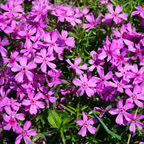
Creeping phlox
Great on slopes and in rock gardens, Phlox subulata makes a nice, loose groundcover. Excellent interplanted with tulips. Blooms in early May in Iowa. Shear after blooming if needed to keep plants compact and full.
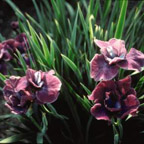
Siberian iris
Unlike Grandma’s German bearded iris, Iris siberica almost never suffers from pests and diseases. The foliage looks great all season long with beautiful delicate flowers in late May to early June. Plant in drifts.
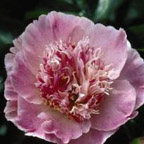
Peony
What would a June garden be without Paeonia, an old-fashioned favorite? Excellent to get from friends, but also invest in some of the gorgeous new types, especially the crinkled single types. Stunning!
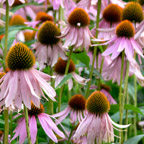
Purple coneflower
Echinacea purpurea is an Iowa prairie native that survives any weather and spreads nicely. Bees and butterflies love it. Leave flowers to dry on the plant to go to seed and attract goldfinches. Interesting in the snow, too
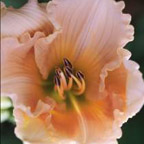
Daylily
Hemerocallis is a July bloomer. Each flower blooms just one day, but the plant produces so many it seems to bloom a long time. Deadhead regularly. ‘Stella de Oro,’ a miniature, is one of the longest bloomers.
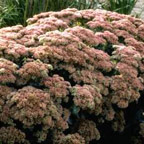
Joe-pye weed
Give this big guy room to sprawl—about a 4’ by 4’ area—and he’ll steal the show in August and September. Eupatorium purpureum hits up to 6 foot and the “chocolate” type is striking with dark maroon stems and deep rose flowers.
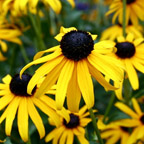
Black-eyed Susan ‘Goldsturm’
In late August and September, when everything else is tired-looking, Rudbeckia fulgida ‘Goldsturm’ bursts into bloom and looks delightfully fresh. A good spreader; great to get from friends and family.
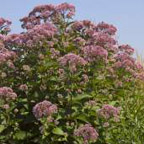
Tall sedums
While ‘Autumn Joy’ is the most common, try other less tall sedums, such as ‘Brilliant’. It flops less. Divide ‘Autumn Joy’ every two years to prevent flopping. Plant in drifts of three or more for best impact. Blooms in September.
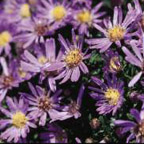
Asters
Fancy cousins of the native prairie flower, garden asters are September bloomers. Avoid types not hardy to Zone 4 and colder. Consider spraying with a fungicide (organic types available) in April to prevent mildew problems in summer.
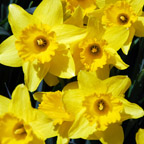
Daffodils
Technically a bulb but such welcome, brilliant color in April that they’re indispensable. Plant Narcissus (the botanical name for all types of daffoiils) in large drifts of 10 or more for best effect. Plant early-, mid-, and late-season types for weeks of bloom. Let foliage fade on plant.
10 Perennials for Shade

Everblooming-bleeding heart
Unlike its more common cousin, Dicentra eximia has ferny foliage that looks good all season long and little pink flowers that are produced all season long. An amazing plant! First heavy flush of blooms in April.
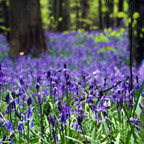
Virginia bluebells
Mertensia virginica blooms in late April. Spreads rapidly, especially in more moist conditions. Great in rough grass or among trees. Excellent to get as divisions from a friend. Creates a gorgeous blue mist of bloom.
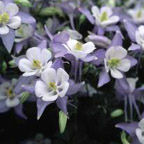
Columbine
The intricate flowers of Aquilegia x hybrida often remind me of elaborate hanging lanterns. The common type can be dug and shared, but do try the stunning special cultivars in blues, pinks, and yellows. Blooms in May.
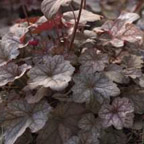
Coral bells
Heuchera foliage is so nice you could grow it for that alone. Often green, it now also comes in fantastical colors and markings. Almost as a bonus, it produces sprays of flowers in pink and white in June. Doesn’t like too much shade.
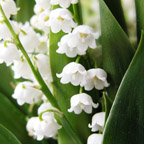
Lily-of-the-valley
A stand of Convallaria majalis makes passerby stop to appreciate its sweet fragrance in May or June. Spreads rapidly to the point of being invasive. Plant it where it’s contained by sidewalks, driveways, or other major barriers.
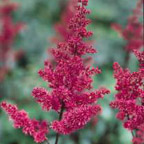
Astilbe
This moisture-lover will be sparse with small blooms if not given ample extra waterings and good, rich soil. Gorgeous plumes of flowers in July and sometimes August. Size depends on the type of cultivar.
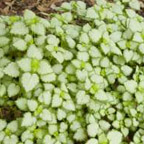
Lamium
A showy groundcover, it spreads readily with ideal conditions and ample, but not too much, moisture. Look for interesting cultivars. Pink or white flowers in June or July.
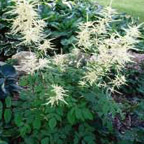
Goats-beard
Often mistaken for astilbe, this woodland native plant is taller (4 to 6 feet) and less needy about water. Beautiful creamy white plumes. Blooms in June and July.
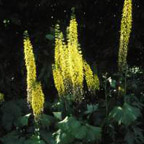
Ligularia ‘The Rocket’
Hits 3 to 4 feet tall. In all but the wettest years, it needs lots of water in late summer, and direct afternoon sun will make it wilt. The show-stopping spires in June or July make it worth it. Appreciates dark, rich soil.
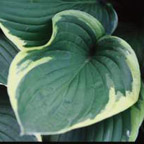
Hosta
Try a variety of hostas. Some are minis just a few inches tall and across while others are huge, like the giant yellow-green ‘Sum and Substance’ spreads up to 4 feet across. Try blue crinkled types and those with creamy, subtle variations in greens, creams, and yellows. Hosta plantiginea is outrageously fragrant.
Other Links Of Interest:
Photographs courtesy of Bailey Nurseries except daffodils © Elina Elisseeva/fotolia, creeping phlox © Canoner/fotolia, lily-of-the-valley © jfgrave/fotolia, and bluebells © Anyka/fotolia.
Please do not use text, photos, or illustrations on this web page, web site, or newsletter without express permission from The Iowa Gardener. Many materials are copyrighted and reuse is violation of that copyright. Click here to request permission to use. Thank you!